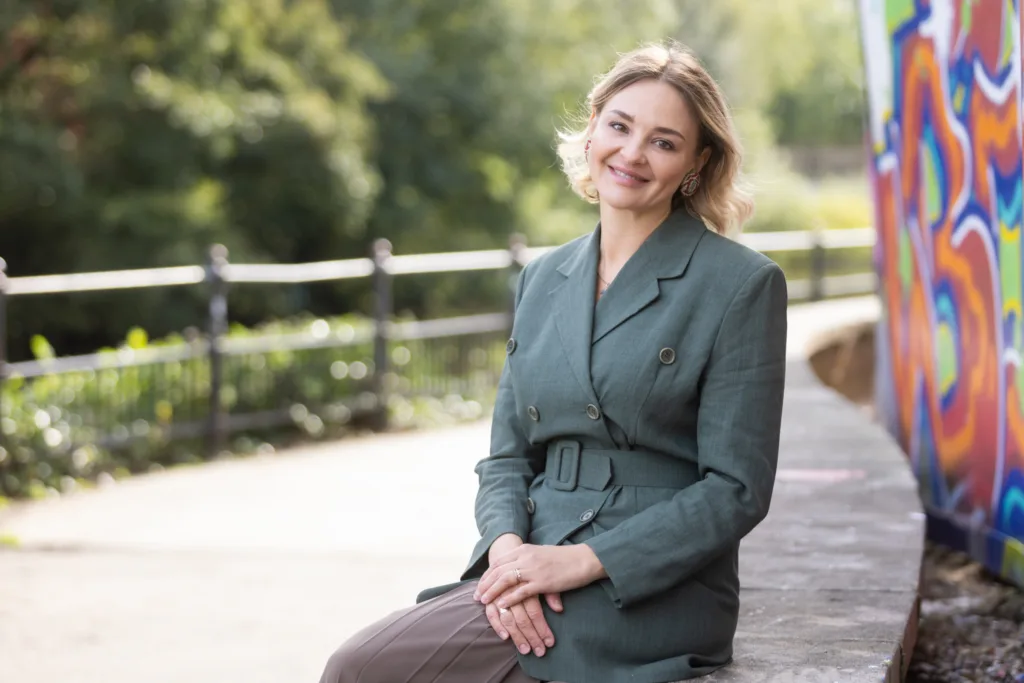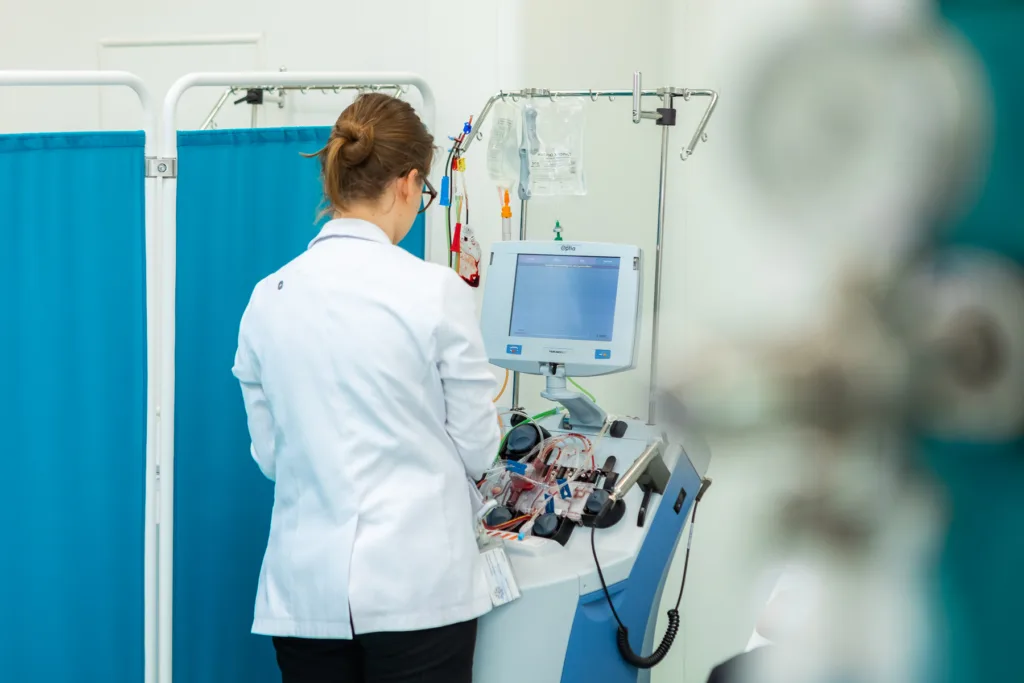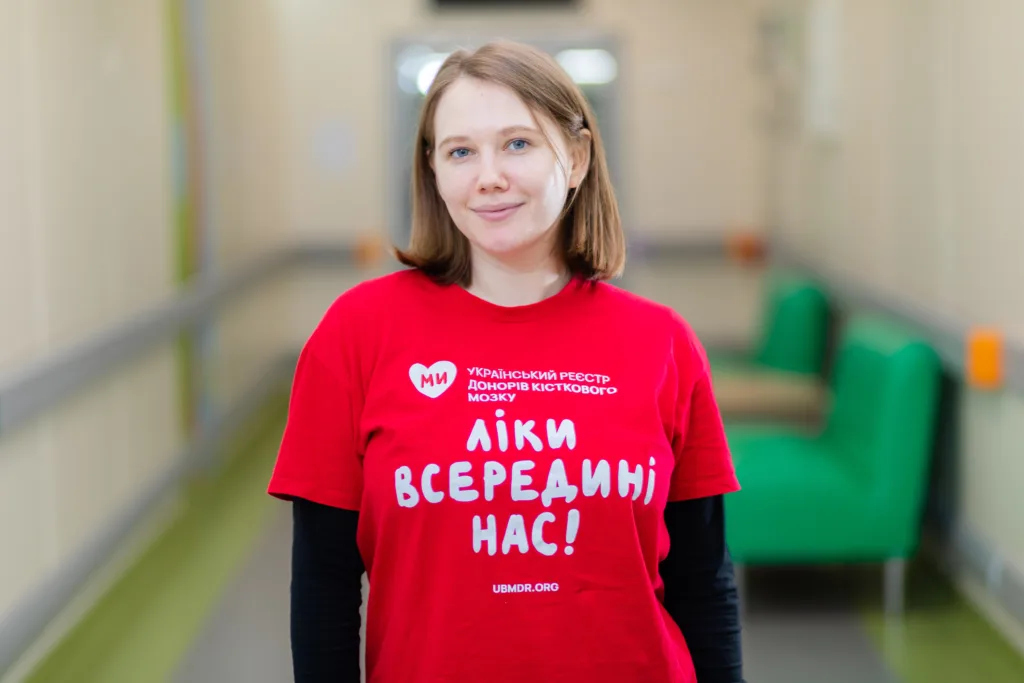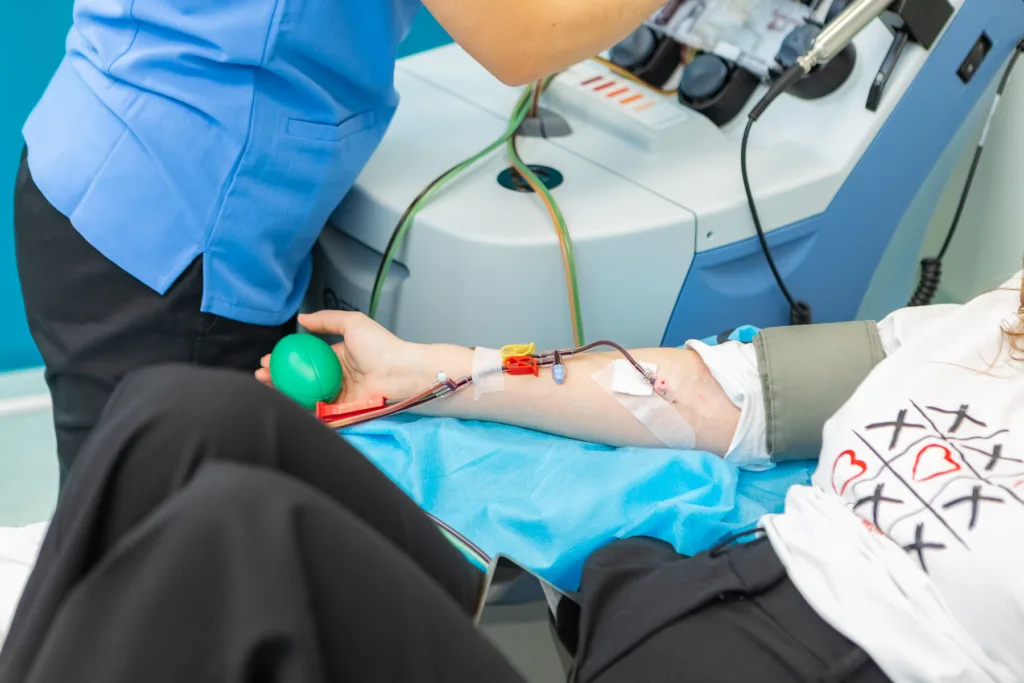Every year, thousands of Ukrainians learn about a diagnosis that sounds like a sentence – blood cancer. But for many of them, there is a chance of recovery – and it depends not only on doctors, but also on the indifference of each of us. We talked to the Ukrainian Bone Marrow Donor Registry (UBMDR) about how it works.
Read also: How a unique Trinity Hub in Kyiv helps blind veterans return to life
What is blood cancer?
Blood cancer is a generalised name for a group of malignant diseases that affect the haematopoietic and lymphatic systems. The most common forms are leukaemia, lymphoma and multiple myeloma. All of them occur because blood-forming cells begin to multiply uncontrollably and displace healthy cells that the body needs.
‘This disease often occurs for no apparent reason. However, it is known that risk factors include both genetic disorders and external influences such as chemicals, ionising radiation, and some viruses,’ explains Maria Mazur, a haematologist and consultant at UBMDR.

What symptoms can indicate blood cancer?
Haematological diseases are insidious. In most patients, at the initial stage, blood cancer does not manifest itself in any way that would make them immediately consult a haematologist. Symptoms can be easily confused with a viral infection or simple overwork.
The most common symptoms are
- increased fatigue, pallor;
- prolonged subfebrile temperature (up to 38 °C)
- unexplained anaemia;
- frequent infections
- bleeding;
- pain in bones or joints;
- swollen lymph nodes.
‘When such symptoms last for more than 2-3 weeks, you shouldn’t stop at a general blood test alone. In such cases, it is important to monitor the patient dynamically. This allows us to detect a serious pathology in time,’ emphasises Maria Mazur.
How is blood cancer treated?
The basis of therapy is polychemotherapy – a course combination of several drugs that destroys malignant cells. Depending on the type of leukaemia or lymphoma, targeted drugs (which act on specific mutations), immunotherapy or even CAR-T therapy, the latest method when a patient’s own immune cells are ‘taught’ to destroy cancer, may be added.
At the same time, the patient receives supportive treatment: transfusions of blood and its components, antibiotics, hormonal and antifungal drugs.
However, there are cases when even the most effective chemotherapy does not give the expected result. In such situations, doctors turn to bone marrow transplantation.

When is a bone marrow transplant needed?
Bone marrow transplantation (BMT) is not an experimental method, but a recognised and proven standard of care. It is used in case of relapse, resistance to chemotherapy or in high-risk patients.
‘TCM is a way to completely ‘restart’ the haematopoietic system. We inject the patient with healthy stem cells that restore the bone marrow and start producing healthy blood cells,’ says Maria Mazur.
These cells can be the patient’s own (autologous transplantation) or taken from a donor (allogeneic transplantation). The latter option is most often used for leukaemia.
Where to find a donor?
The most reliable option is a sibling. But the chance of genetic compatibility even between them is only 25%. In other cases, the patient relies on a stranger who has registered with the bone marrow donor registry.
‘As of May 2025, there are more than 16,000 people in the Ukrainian bone marrow donor registry. But to effectively cover the country’s needs, we need at least a million,’ says Natalia Kovgan, Communications Manager at the Ukrainian Bone Marrow Donor Registry (UBMDR).

Being a donor is easy and safe
To join the register, you need to
- Fill in the form on the website ubmdr.org;
- receive and mail back a DNA sampling kit (cheek swab);
- be prepared that one day you may receive a call and you will be someone’s only chance for recovery.
After that, your DNA is sent to a laboratory in Germany for analysis, which will determine your compatibility with a patient in need of a bone marrow transplant.
The cost of one DNA test is 35 €. For people aged 18-35, we cover this amount through charitable contributions. If you are over 35, please pay for the test yourself.
Who can be a bone marrow donor?
Any healthy person aged 18 to 58 years and weighing more than 40 kg can be a potential donor.
If you are a donor of blood or its components, you can most likely be a donor of haematopoietic stem cells.
Contraindications include serious chronic and autoimmune diseases, diabetes mellitus, history of cancer, heart and kidney disease, hepatitis B and C, and HIV. For a full list of contraindications, please visit the UBMDR website.

How is bone marrow sampling performed?
There are 2 ways to collect haematopoietic stem cells:
- Peripheral blood is the most common (over 80% of cases). The donor is injected with a drug that stimulates the release of haematopoietic stem cells into the blood 5 days before the donation. Then these cells are collected using a separator, as in plasma donation. This donation lasts from 3 to 5 hours;
from bone marrow – a less common method, when cells are taken under anaesthesia from the pelvic bone. The procedure lasts about 1 hour.
- Both procedures are safe and painless and are carried out in the conditions of the NSCLC ‘Okhmatdyt’. Side effects are minimal – fatigue, muscle or back pain during stimulation is possible, which disappears in a few days. The donor chooses the method of donation together with the doctor. During the donation, the donor donates 1-5% of their blood cells, which are fully restored in a few weeks.
You can support the Registry financially:
- make a one-time donation or sign up for a regular donation on the website;
- donate to Monobank;
- activate a cashback for good from Monobank in favour of the Donor Registry.
For information:
The Ukrainian Bone Marrow Donor Registry UBMDR is the only registry in Ukraine that searches for unrelated bone marrow donors for patients with blood cancer, immunodeficiencies and other serious diseases requiring transplantation.
Read also: Artificial intelligence in the humanitarian sphere. How technology helps people



